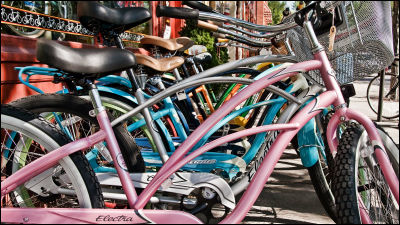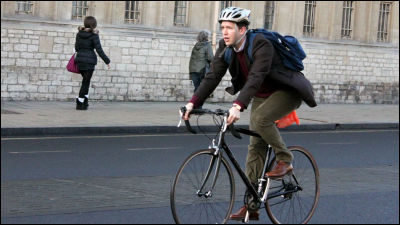How did the bicycle powerhouse the Netherlands feel free to bicycle ride?

by Javier Vieras
The Netherlands is the world's leading bicycle powerhouse with a total extension of 35,000 km cycling courses in the country. Bicycles were widely used before the Second World War in the Netherlands where there are few slopes and plains, but the bicycle powerkind like today is due to the efforts of the nation since the 1970s There was a reason. About that effort, Melissa Brantlette and Mr. Chris Brantlett, who has been selling the car and starting a bicycle life for 8 years, are summarized in a book called " Building the Cycling City ", and a news site · Vox David · Mr. Roberts has heard a detailed story from Mr. and Mr. Brantlet.
How the Dutch created a casual biking culture - Vox
https://www.vox.com/science-and-health/2018/8/28/17789510/bike-cycling-netherlands-dutch-infrastructure

The Brantlet family is a family of four, who used to live a car in the same way as other families, but sold the car in 2010 and switched to a bicycle life. Mr. Melissa and Mr. Chris, who knew the Dutch bicycle circumstance through the cycling circle, visited the Netherlands city with children and learned about the local area and wrote the book.
Actually, even in the Netherlands of a bicycle big country, the major transportation after World War II was switched to cars. For example, Rotterdam was bombed by the German Army, the center of the town became a burned-out field, and while being rebuilt, it was not friendly to pedestrians, bicycles, and public transportation agencies, because a car-centered town was built, a traffic accident The number of bicycles has increased and the bicycle utilization rate has decreased greatly. But in the 1970s, as the social movements to reduce children's sacrifice due to traffic accidents occurred and the oil crisis occurred, the country began to adopt the policy of bicycle protection and the current " I will start walking the way to a bicycle big country.
According to Mr. Melissa and Mr. Chris, in the first place in the Netherlands the fact that consideration for people riding a bicycle is pretty much different from other countries. Although it is unpleasant to run next to the car while riding a bicycle, the difference in speed with the flow of parallel cars is taken into account in the Netherlands, where the car runs at speeds of over 30 km per hour It seems that complete isolation is done by setting concrete walls between bicycle lanes and making separation bands using plants. As in the case of a pedestrian crossing, unavoidably crossing the traffic of a car and a bicycle, the structure of the pedestrian crossing is raised, and the speed bumps are set to reduce the speed of the car before and after the pedestrian crossing about.
The bicycle's "leading role" is also shown in the number that the dutch cyclist's helmet wearing rate is 0.5% or less. It is about a sports cyclist wearing, so it seems to be about 1 in about 200 people. This is unique to the Netherlands who have been making an environment where they can safely ride a bicycle, as opposed to many states in the state where there is a law that "there is a car priority, so people riding a bicycle wear a helmet for the time of emergency" I can say

by Adityo Sastromuljono
Besides, bicycles are not only preferential treatment as a measure, but also "training" of people riding a bicycle is done. There are classes to acquire "cycling skills" between 10 and 11 in many schools, and from 11 to 12 years old, a test is conducted to ascertain whether or not you understand traffic rules. A certificate of acceptance is to be issued to the child who finished the test. Furthermore, in order to support safe schooling by bicycle, actual running survey is conducted to see whether designated school road is safe.
However, it is also clear that bicycles are the only thing that is used in combination with cars and public transportation. For example, "From the house to the nearest station" "From the station to the work place" is the use of the park and ride style to ride a bicycle. Since every station has the premise that people came by bicycle and parked, a large parking space is provided and there is no such thing as "This station can not go because there is no bicycle parking place", the traveling route is reasonably distributed It is said that it is creating a virtuous circle of traffic.
Related Posts:
in Vehicle, Posted by logc_nt







